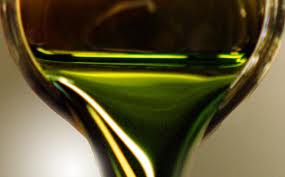 ANN ARBOR-It appears as if Mother Nature Herself was wasting her own valuable time by using a multimillion-year program to produce crude oil. Michigan Engineering scientists have the ability to “pressure-cook” algae as little as 1 minute, as well as transform an unmatched 65 % of the actual physical eco-friendly slime to produce biocrude.
ANN ARBOR-It appears as if Mother Nature Herself was wasting her own valuable time by using a multimillion-year program to produce crude oil. Michigan Engineering scientists have the ability to “pressure-cook” algae as little as 1 minute, as well as transform an unmatched 65 % of the actual physical eco-friendly slime to produce biocrude.
“We’re trying to mimic the process in nature that forms crude oil with marine organisms,” said Phil Savage, an Arthur F. Thurnau professor, as well as a teacher of chemical engineering with the University of Michigan.
The precise breakthrough discoveries is going to be introduced Nov. 1st, during the 2012 American Institute of Chemical Engineers Annual Meeting in Pittsburgh, PA.
Savage’s ocean-going organism chosen will be the green sea micro-alga from the genus Nannochloropsis.
To create their own one-minute biocrude, Savage and Julia Faeth, a doctorate undergraduate in Savage’s research laboratory, filled metallic pipe connector utilizing 1.5 milliliters of moist algae, capped the unit and plunged it directly into 1,100-degree Fahrenheit soft sand. The small volume of mass revealed how come the algae became incredibly hot all through, however with merely a minute as a way to warm, the algae’s temperature level should have simply touched the 550-degree level, before they drew the reactor out.
Before, Savage together with his team, heated the algae during cycles beginning with Ten minutes to as much as 90 minutes. They witnessed their best results with roughly 50 % of the algae changed into biocrude, while operating it within a 10 to 40 minute span at 570 degrees.
What makes the one-minute conclusions a whole lot better? Savage and Faeth are not probably going to be positive till after they perform further study, nevertheless they have a couple of ideas.
“My guess is that the reactions that produce biocrude are actually much faster than previously thought,” Savage professed.
Faeth demonstrates the super fast warming up could very well boost the biocrude by maintaining unwanted reactions in check.
“For example, the biocrude might decompose into substances that dissolve in water, and the fast heating rates might discourage that reaction,” Faeth claimed.
The team points out the reality that smaller reaction time intervals indicate the reactors doesn’t have to be so large.
“By reducing the reactor volume, the cost of building a biocrude production plant also decreases,” Faeth stated, but both she and Savage suggested they can’t announce beyond doubt if the the newest method is faster as well as less costly till the technique is more totally developed.
Present conventional producers of algae-based fuel initially dry the algae, and then eliminate the organic oil. Nevertheless over $20 per gallon, this type of petrol is not even close the gas pump.
“Companies know that that approach is not economical, so they are looking at approaches for using wet algae, as are we,” Savage declared.
One advantage using the wet method is that it not just cleans away the actual fat from the algae, it also isolates proteins and carbohydrates. The one minute method achieved this so efficiently that the oil held about 90 % of the energy source in the original algae.
“That result is near the upper bound of what is possible,” Savage stated.
Before biocrude being supplied into the existing refinery method for petroleum, it will require pre-refining to eliminate the extra oxygen and nitrogen atoms which often thrive in living things. The Savage research laboratory similarly is on its way with enhanced processes for this kind of cycle of biofuel development, and a few months ago smashing the track record getting a biocrude which was 97 % carbon and hydrogen. A study regarding this work is currently under examination.
As soon as producing biofuel utilizing algae is cost-effective, research professionals estimate that an area as large as New Mexico could create enough oil equivalent to modern day U.S. petroleum consumption. In addition balanced with corn produced for the objective of ethanol-which presently realizes 50 percent that area-the algae would not need to take up top quality farmland, cultivating in brackish waters as a substitute.
Speaking of the “pressure cooker” method of oil extraction, you can details of the entire “home grown” technique in “Making Algae Biofuels at Home” below.
“Building Open Ponds” Second Edition about to be Released
The second edition of “building Open Ponds is about to be released. If you’d like a “sneak preview” and a hefty discount when this book goes live, click the book or this link right here.
UPDATE: This book is in the final stages of approval. Amazon has agreed to publish the paperback. We added almost 300 pages of new material making this the most in-depth book available.
The Algae Revolution Has Begun




You might checkout the algae to oil method used by open Bear Oceanics using mechanical cavitation to mechanically separate lipids from algae. http://www.bearoceanics.org
Also, how about adding information on the vertical algae gardening like http://www.youtube.com/watch?v=vxNeBQCRv1c – the company is no more and the holding company is de-listed. If they have patents they might be good references for ideas (not to tread on but to inform ourselves) to enspire more ideas for good quality algae growth.
What kind of algae do you find most ‘fruitful’ to generate lipid oils out of?
Jack,
I’ll have to check out your links before I can comment. As far as which algae I prefer, it depends on the final application, or objective. I don’t really have a “favorite.” I do like Chlorella simply because it is a great ‘all around” kind of algae, easy to grow and can have multiple uses, including biofuels. But also as a health food supplements and organic animal feed. I dislike it because it is a “micro” algae and as such it is more difficult to harvest.